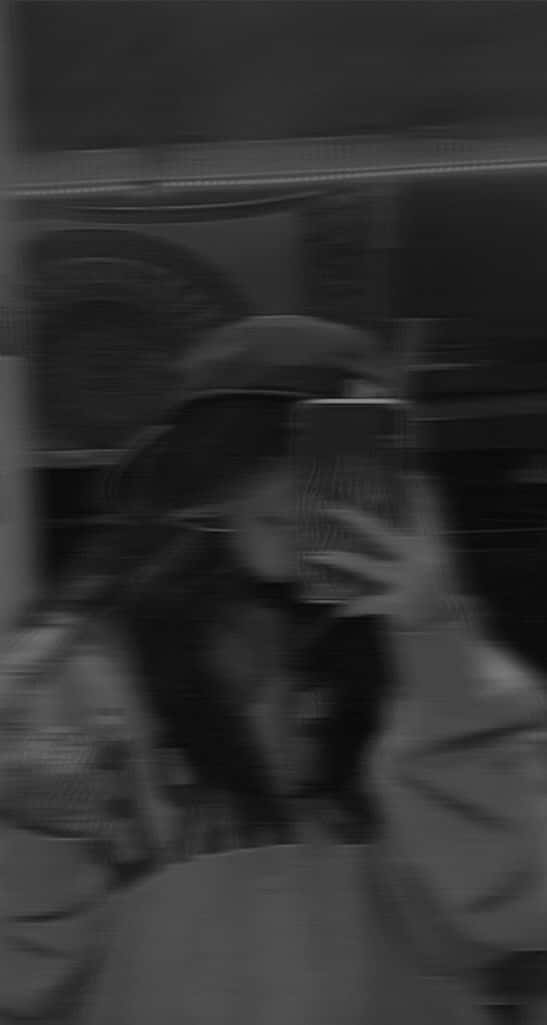1000+ Gym Captions for Instagram and TikTok
More than 1000 gym caption ideas for social media. Groups of caption subjects. Other hints about selfies and fitness on the internet.
Lily Phillips
Lillian Daisy Phillips (born 23 July 2001) is an English pornographic actress. Born in Derbyshire, she dropped out of university to work in the sex industry; her aesthetic is that of the girl next door. In late 2024, she uploaded a gang bang in which she had sex with 101 men to OnlyFans and then announced plans to have sex with 300 and then 1,000 men in one day. Both attracted widespread attention after Josh Pieters, who had accompanied her throughout the former, uploaded I Slept with 100 Men in One Day to his YouTube account. Although the documentary itself was praised, Phillips and OnlyFans were heavily criticised for the stunt, with commentators comparing the men to those queuing to rape Gisèle Pelicot. Phillips later defended both the stunt and her occupation. Her 1,000-men gang bang was scheduled to be filmed in America in February 2025 but postponed due to deportation fears and later cancelled. She has also filmed content with Bonnie Blue and appeared on the BBC show Newsnight.
!"[>Full~VIRAL*)-El siri Vdo Link Original Viral Vdo On Social Media X Twitter Trending
!"[>Full~VIRAL*)-El siri Vdo Link Original Viral Vdo On Social Media X Twitter Trending has one repository available. Follow their code on GitHub.
1000+ Gym Captions for Instagram and TikTok
More than 1000 gym caption ideas for social media. Groups of caption subjects. Other hints about selfies and fitness on the internet.
If y(x) = x^x , x gt 0 then y"(2) – 2y'(2) is equal to
<p>To solve the problem, we need to find <span class="mjx-chtml MJXc-display" style="text-align: center;"><span class="mjx-math"><span class="mjx-mrow"><span class="mjx-msup"><span class="mjx-base" style="margin-right: -0.006em;"><span class="mjx-mi"><span class="mjx-char MJXc-TeX-math-I" style="padding-top: 0.225em; padding-bottom: 0.519em; padding-right: 0.006em;">y</span></span></span><span class="mjx-sup" style="font-size: 70.7%; vertical-align: 0.584em; padding-left: 0.082em; padding-right: 0.071em;"><span class="mjx-mo" style=""><span class="mjx-char MJXc-TeX-main-R" style="padding-top: 0.298em; padding-bottom: 0.298em;">′′</span></span></span></span><span class="mjx-mo"><span class="mjx-char MJXc-TeX-main-R" style="padding-top: 0.446em; padding-bottom: 0.593em;">(</span></span><span class="mjx-mn"><span class="mjx-char MJXc-TeX-main-R" style="padding-top: 0.372em; padding-bottom: 0.372em;">2</span></span><span class="mjx-mo"><span class="mjx-char MJXc-TeX-main-R" style="padding-top: 0.446em; padding-bottom: 0.593em;">)</span></span><span class="mjx-mo MJXc-space2"><span class="mjx-char MJXc-TeX-main-R" style="padding-top: 0.298em; padding-bottom: 0.446em;">−</span></span><span class="mjx-mn MJXc-space2"><span class="mjx-char MJXc-TeX-main-R" style="padding-top: 0.372em; padding-bottom: 0.372em;">2</span></span><span class="mjx-msup"><span class="mjx-base" style="margin-right: -0.006em;"><span class="mjx-mi"><span class="mjx-char MJXc-TeX-math-I" style="padding-top: 0.225em; padding-bottom: 0.519em; padding-right: 0.006em;">y</span></span></span><span class="mjx-sup" style="font-size: 70.7%; vertical-align: 0.584em; padding-left: 0.082em; padding-right: 0.071em;"><span class="mjx-mo" style=""><span class="mjx-char MJXc-TeX-main-R" style="padding-top: 0.298em; padding-bottom: 0.298em;">′</span></span></span></span><span class="mjx-mo"><span class="mjx-char MJXc-TeX-main-R" style="padding-top: 0.446em; padding-bottom: 0.593em;">(</span></span><span class="mjx-mn"><span class="mjx-char MJXc-TeX-main-R" style="padding-top: 0.372em; padding-bottom: 0.372em;">2</span></span><span class="mjx-mo"><span class="mjx-char MJXc-TeX-main-R" style="padding-top: 0.446em; padding-bottom: 0.593em;">)</span></span></span></span></span> for the function <span class="mjx-chtml MJXc-display" style="text-align: center;"><span class="mjx-math"><span class="mjx-mrow"><span class="mjx-mi"><span class="mjx-char MJXc-TeX-math-I" style="padding-top: 0.225em; padding-bottom: 0.519em; padding-right: 0.006em;">y</span></span><span class="mjx-mo"><span class="mjx-char MJXc-TeX-main-R" style="padding-top: 0.446em; padding-bottom: 0.593em;">(</span></span><span class="mjx-mi"><span class="mjx-char MJXc-TeX-math-I" style="padding-top: 0.225em; padding-bottom: 0.298em;">x</span></span><span class="mjx-mo"><span class="mjx-char MJXc-TeX-main-R" style="padding-top: 0.446em; padding-bottom: 0.593em;">)</span></span><span class="mjx-mo MJXc-space3"><span class="mjx-char MJXc-TeX-main-R" style="padding-top: 0.077em; padding-bottom: 0.298em;">=</span></span><span class="mjx-msubsup MJXc-space3"><span class="mjx-base"><span class="mjx-mi"><span class="mjx-char MJXc-TeX-math-I" style="padding-top: 0.225em; padding-bottom: 0.298em;">x</span></span></span><span class="mjx-sup" style="font-size: 70.7%; vertical-align: 0.584em; padding-left: 0px; padding-right: 0.071em;"><span class="mjx-mi" style=""><span class="mjx-char MJXc-TeX-math-I" style="padding-top: 0.225em; padding-bottom: 0.298em;">x</span></span></span></span></span></span></span>.</p><p><strong>Step 1: Find \( y'(x) \)</strong></p><p>We start by differentiating \( y(x) = x^x \). To do this, we can use logarithmic differentiation.</p><p>1. Take the natural logarithm of both sides:
\(
\ln y = \ln(x^x) = x \ln x
\)</p><p>2. Differentiate both sides with respect to \( x \):
\(
\frac{1}{y} \frac{dy}{dx} = \ln x + 1
\)</p><p>3. Multiply through by \( y \):
\(
y' = y(\ln x + 1) = x^x(\ln x + 1)
\)</p><p><strong>Step 2: Find \( y'(2) \)</strong></p><p>Now we substitute \( x = 2 \):
\(
y'(2) = 2^2(\ln 2 + 1) = 4(\ln 2 + 1)
\)</p><p><strong>Step 3: Find \( y''(x) \)</strong></p><p>Next, we differentiate \( y'(x) \) to find \( y''(x) \). We will use the product rule:
\(
y' = x^x(\ln x + 1)
\)</p><p>Using the product rule:
\(
y'' = \frac{d}{dx}(x^x) \cdot (\ln x + 1) + x^x \cdot \frac{d}{dx}(\ln x + 1)
\)</p><p>We already found \( \frac{d}{dx}(x^x) = x^x(\ln x + 1) \), and:
\(
\frac{d}{dx}(\ln x + 1) = \frac{1}{x}
\)</p><p>Thus:
\(
y'' = x^x(\ln x + 1)(\ln x + 1) + x^x \cdot \frac{1}{x}
\)
\(
= x^x(\ln x + 1)^2 + x^{x-1}
\)</p><p><strong>Step 4: Find \( y''(2) \)</strong></p><p>Now we substitute \( x = 2 \):
\(
y''(2) = 2^2(\ln 2 + 1)^2 + 2^{2-1} = 4(\ln 2 + 1)^2 + 2
\)</p><p><strong>Step 5: Calculate \( y''(2) - 2y'(2) \)</strong></p><p>Now we can calculate:
\(
y''(2) - 2y'(2) = (4(\ln 2 + 1)^2 + 2) - 2(4(\ln 2 + 1))
\)
\(
= 4(\ln 2 + 1)^2 + 2 - 8(\ln 2 + 1)
\)</p><p><strong>Step 6: Simplify the expression</strong></p><p>Let’s simplify:
\(
= 4(\ln 2 + 1)^2 - 8(\ln 2 + 1) + 2
\)</p><p>This is a quadratic in terms of \( \ln 2 + 1 \):
Let \( u = \ln 2 + 1 \):
\(
= 4u^2 - 8u + 2
\)</p><p><strong>Step 7: Factor or use the quadratic formula</strong></p><p>We can use the quadratic formula:
\(
= 4(u^2 - 2u + \frac{1}{2}) = 4\left((u - 1)^2 - \frac{1}{2}\right)
\)</p><p><strong>Final Result</strong></p><p>Thus, the final answer is:
\(
y''(2) - 2y'(2) = 4\left((\ln 2 + 1 - 1)^2 - \frac{1}{2}\right) = 4\left((\ln 2)^2 - \frac{1}{2}\right)
\)</p>
Lily Phillips
Lillian Daisy Phillips (born 23 July 2001) is an English pornographic actress. Born in Derbyshire, she dropped out of university to work in the sex industry; her aesthetic is that of the girl next door. In late 2024, she uploaded a gang bang in which she had sex with 101 men to OnlyFans and then announced plans to have sex with 300 and then 1,000 men in one day. Both attracted widespread attention after Josh Pieters, who had accompanied her throughout the former, uploaded I Slept with 100 Men in One Day to his YouTube account. Although the documentary itself was praised, Phillips and OnlyFans were heavily criticised for the stunt, with commentators comparing the men to those queuing to rape Gisèle Pelicot. Phillips later defended both the stunt and her occupation. Her 1,000-men gang bang was scheduled to be filmed in America in February 2025 but postponed due to deportation fears and later cancelled. She has also filmed content with Bonnie Blue and appeared on the BBC show Newsnight.
Chaal Chal Tu Apni Mai Tujhe Pehchan Lunga Lyrics
Tu Hai Kahan Lyrics of Hindi Rap Song, Sung By Uraan. The Song Is Written By Ahad Khan & Usama Ali and Music Was Composed By Raffey Anw...
1000+ Gym Captions for Instagram and TikTok
More than 1000 gym caption ideas for social media. Groups of caption subjects. Other hints about selfies and fitness on the internet.
Top 10 Greatest Man in the World: Influential Figures
Explore the top 10 greatest man in the world who shaped history and inspired generations with their extraordinary contributions to society and humanity.
690 452 Meaning - Google Search
The number 690452 has gained popularity on TikTok, where it is said that writing it on your wrist before sleeping can trap you in a dream or parallel universe, leading to real-life consequences if you die in your sleep. This phenomenon is often referred to as a 'cursed number' and has sparked various discussions and videos exploring its meaning and implications. The trend raises questions about its authenticity and the effects it may have on individuals who engage with it.
Ang Mutya Ng Section E (BOOK 2) - Vietsub - Chương 228
Read Chương 228 from the story Ang Mutya Ng Section E (BOOK 2) - Vietsub by ZoeT0213 (Zoe.T) with 3,395 reads. angmutyangsectione, yuri, keifer. Pov của Jay-ja...
Download Blurry Black Aesthetic Mirror Selfie Picture | Wallpapers.com
Download Blurry Black Aesthetic Mirror Selfie Picture for your desktop, mobile phone and table. Multiple sizes available for all screen sizes and devices. 100% Free and No Sign-Up Required.
XXV in Roman Numerals
We encounter Roman numerals in everyday life — on clocks, calendars, and books. Most of us know Arabic numerals well. So in this article, we will study the usages, and how to write Roman numerals.
Girl Hidden Face Blurry Aesthetic Mirror Selfie
If you’re scrolling through Instagram or Pinterest, you’ve probably seen the girl hidden face blurry aesthetic mirror selfie trend. It’s mysterious, artsy, and effortlessly cool. But how do you get that perfect shot? Let’s break it down step by step.
If y(x) = x^x , x gt 0 then y"(2) – 2y'(2) is equal to
<p>To solve the problem, we need to find <span class="mjx-chtml MJXc-display" style="text-align: center;"><span class="mjx-math"><span class="mjx-mrow"><span class="mjx-msup"><span class="mjx-base" style="margin-right: -0.006em;"><span class="mjx-mi"><span class="mjx-char MJXc-TeX-math-I" style="padding-top: 0.225em; padding-bottom: 0.519em; padding-right: 0.006em;">y</span></span></span><span class="mjx-sup" style="font-size: 70.7%; vertical-align: 0.584em; padding-left: 0.082em; padding-right: 0.071em;"><span class="mjx-mo" style=""><span class="mjx-char MJXc-TeX-main-R" style="padding-top: 0.298em; padding-bottom: 0.298em;">′′</span></span></span></span><span class="mjx-mo"><span class="mjx-char MJXc-TeX-main-R" style="padding-top: 0.446em; padding-bottom: 0.593em;">(</span></span><span class="mjx-mn"><span class="mjx-char MJXc-TeX-main-R" style="padding-top: 0.372em; padding-bottom: 0.372em;">2</span></span><span class="mjx-mo"><span class="mjx-char MJXc-TeX-main-R" style="padding-top: 0.446em; padding-bottom: 0.593em;">)</span></span><span class="mjx-mo MJXc-space2"><span class="mjx-char MJXc-TeX-main-R" style="padding-top: 0.298em; padding-bottom: 0.446em;">−</span></span><span class="mjx-mn MJXc-space2"><span class="mjx-char MJXc-TeX-main-R" style="padding-top: 0.372em; padding-bottom: 0.372em;">2</span></span><span class="mjx-msup"><span class="mjx-base" style="margin-right: -0.006em;"><span class="mjx-mi"><span class="mjx-char MJXc-TeX-math-I" style="padding-top: 0.225em; padding-bottom: 0.519em; padding-right: 0.006em;">y</span></span></span><span class="mjx-sup" style="font-size: 70.7%; vertical-align: 0.584em; padding-left: 0.082em; padding-right: 0.071em;"><span class="mjx-mo" style=""><span class="mjx-char MJXc-TeX-main-R" style="padding-top: 0.298em; padding-bottom: 0.298em;">′</span></span></span></span><span class="mjx-mo"><span class="mjx-char MJXc-TeX-main-R" style="padding-top: 0.446em; padding-bottom: 0.593em;">(</span></span><span class="mjx-mn"><span class="mjx-char MJXc-TeX-main-R" style="padding-top: 0.372em; padding-bottom: 0.372em;">2</span></span><span class="mjx-mo"><span class="mjx-char MJXc-TeX-main-R" style="padding-top: 0.446em; padding-bottom: 0.593em;">)</span></span></span></span></span> for the function <span class="mjx-chtml MJXc-display" style="text-align: center;"><span class="mjx-math"><span class="mjx-mrow"><span class="mjx-mi"><span class="mjx-char MJXc-TeX-math-I" style="padding-top: 0.225em; padding-bottom: 0.519em; padding-right: 0.006em;">y</span></span><span class="mjx-mo"><span class="mjx-char MJXc-TeX-main-R" style="padding-top: 0.446em; padding-bottom: 0.593em;">(</span></span><span class="mjx-mi"><span class="mjx-char MJXc-TeX-math-I" style="padding-top: 0.225em; padding-bottom: 0.298em;">x</span></span><span class="mjx-mo"><span class="mjx-char MJXc-TeX-main-R" style="padding-top: 0.446em; padding-bottom: 0.593em;">)</span></span><span class="mjx-mo MJXc-space3"><span class="mjx-char MJXc-TeX-main-R" style="padding-top: 0.077em; padding-bottom: 0.298em;">=</span></span><span class="mjx-msubsup MJXc-space3"><span class="mjx-base"><span class="mjx-mi"><span class="mjx-char MJXc-TeX-math-I" style="padding-top: 0.225em; padding-bottom: 0.298em;">x</span></span></span><span class="mjx-sup" style="font-size: 70.7%; vertical-align: 0.584em; padding-left: 0px; padding-right: 0.071em;"><span class="mjx-mi" style=""><span class="mjx-char MJXc-TeX-math-I" style="padding-top: 0.225em; padding-bottom: 0.298em;">x</span></span></span></span></span></span></span>.</p><p><strong>Step 1: Find \( y'(x) \)</strong></p><p>We start by differentiating \( y(x) = x^x \). To do this, we can use logarithmic differentiation.</p><p>1. Take the natural logarithm of both sides:
\(
\ln y = \ln(x^x) = x \ln x
\)</p><p>2. Differentiate both sides with respect to \( x \):
\(
\frac{1}{y} \frac{dy}{dx} = \ln x + 1
\)</p><p>3. Multiply through by \( y \):
\(
y' = y(\ln x + 1) = x^x(\ln x + 1)
\)</p><p><strong>Step 2: Find \( y'(2) \)</strong></p><p>Now we substitute \( x = 2 \):
\(
y'(2) = 2^2(\ln 2 + 1) = 4(\ln 2 + 1)
\)</p><p><strong>Step 3: Find \( y''(x) \)</strong></p><p>Next, we differentiate \( y'(x) \) to find \( y''(x) \). We will use the product rule:
\(
y' = x^x(\ln x + 1)
\)</p><p>Using the product rule:
\(
y'' = \frac{d}{dx}(x^x) \cdot (\ln x + 1) + x^x \cdot \frac{d}{dx}(\ln x + 1)
\)</p><p>We already found \( \frac{d}{dx}(x^x) = x^x(\ln x + 1) \), and:
\(
\frac{d}{dx}(\ln x + 1) = \frac{1}{x}
\)</p><p>Thus:
\(
y'' = x^x(\ln x + 1)(\ln x + 1) + x^x \cdot \frac{1}{x}
\)
\(
= x^x(\ln x + 1)^2 + x^{x-1}
\)</p><p><strong>Step 4: Find \( y''(2) \)</strong></p><p>Now we substitute \( x = 2 \):
\(
y''(2) = 2^2(\ln 2 + 1)^2 + 2^{2-1} = 4(\ln 2 + 1)^2 + 2
\)</p><p><strong>Step 5: Calculate \( y''(2) - 2y'(2) \)</strong></p><p>Now we can calculate:
\(
y''(2) - 2y'(2) = (4(\ln 2 + 1)^2 + 2) - 2(4(\ln 2 + 1))
\)
\(
= 4(\ln 2 + 1)^2 + 2 - 8(\ln 2 + 1)
\)</p><p><strong>Step 6: Simplify the expression</strong></p><p>Let’s simplify:
\(
= 4(\ln 2 + 1)^2 - 8(\ln 2 + 1) + 2
\)</p><p>This is a quadratic in terms of \( \ln 2 + 1 \):
Let \( u = \ln 2 + 1 \):
\(
= 4u^2 - 8u + 2
\)</p><p><strong>Step 7: Factor or use the quadratic formula</strong></p><p>We can use the quadratic formula:
\(
= 4(u^2 - 2u + \frac{1}{2}) = 4\left((u - 1)^2 - \frac{1}{2}\right)
\)</p><p><strong>Final Result</strong></p><p>Thus, the final answer is:
\(
y''(2) - 2y'(2) = 4\left((\ln 2 + 1 - 1)^2 - \frac{1}{2}\right) = 4\left((\ln 2)^2 - \frac{1}{2}\right)
\)</p>










